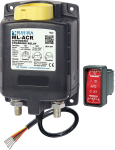Off2Mtns
New member
Hey guys, I am looking to add an inexpensive, simple aux battery (35ah, https://www.harborfreight.com/12v-35-amp-hour-sealed-lead-acid-battery-64102.html) to my 4Runner to help power my 12v fridge. I am just looking to add a little more capacity (ah) than my current starter battery alone provides (70ah). I already purchased a 100w Renogy solar set-up to keep things topped off for daytime hours, but after some overnight testing with my fridge, I am good for only about 14 hours overnight before my battery saver voltage cut-off engages at 12.27V (about 60% battery capacity... a relatively safe margin, no?).
Can someone have a look at my planned set-up here and recommend a good value (isolator or other?) between my starter battery and aux battery? I do not want to run strictly off my aux battery (not enough capacity) but would instead simply like to extend my total capacity wiring these in parallel. I assume it is not advisable to simply wire these in parallel without some kind of isolator between the in case of a faulty aux battery?

Thanks so much!
Can someone have a look at my planned set-up here and recommend a good value (isolator or other?) between my starter battery and aux battery? I do not want to run strictly off my aux battery (not enough capacity) but would instead simply like to extend my total capacity wiring these in parallel. I assume it is not advisable to simply wire these in parallel without some kind of isolator between the in case of a faulty aux battery?

Thanks so much!

